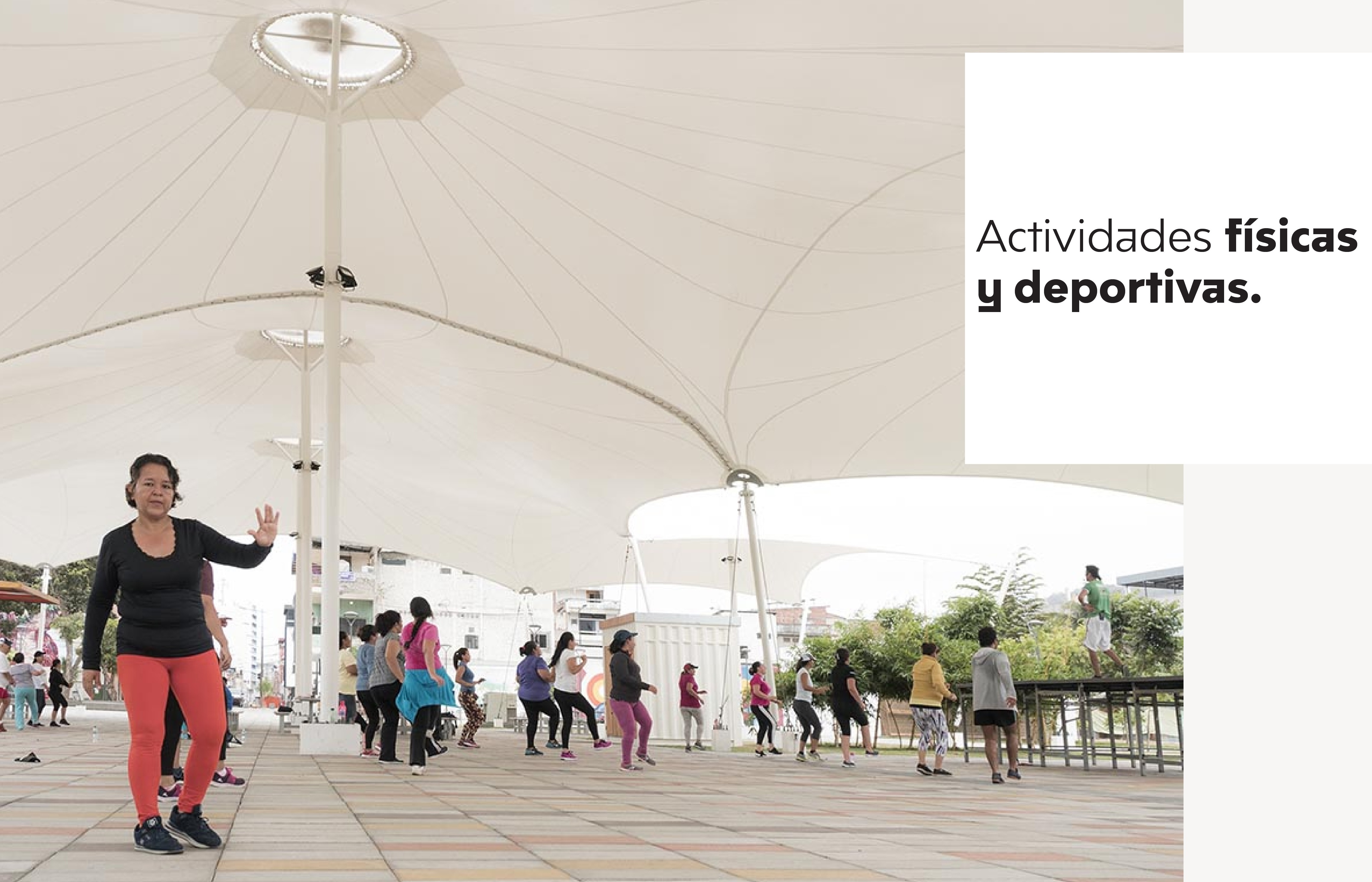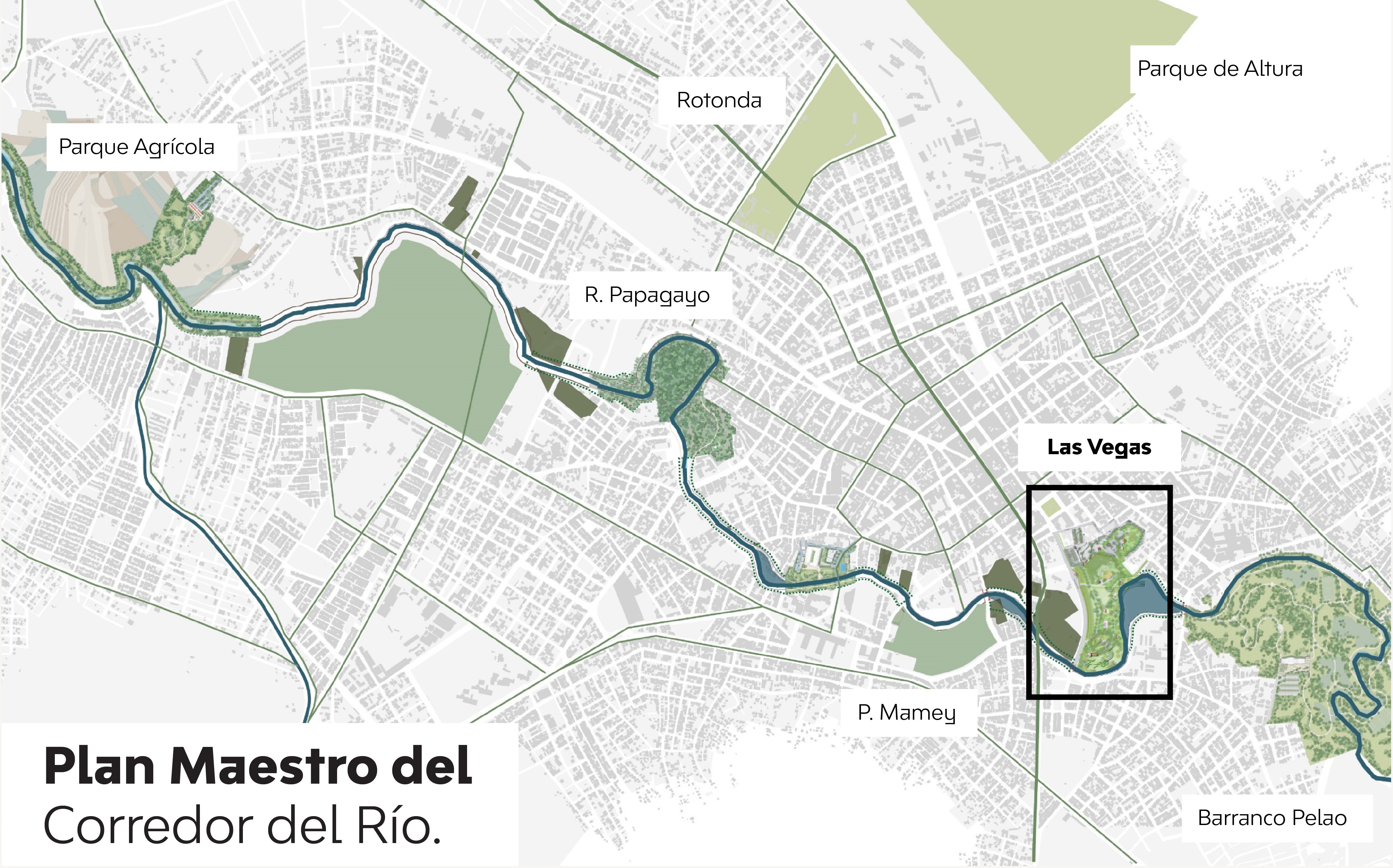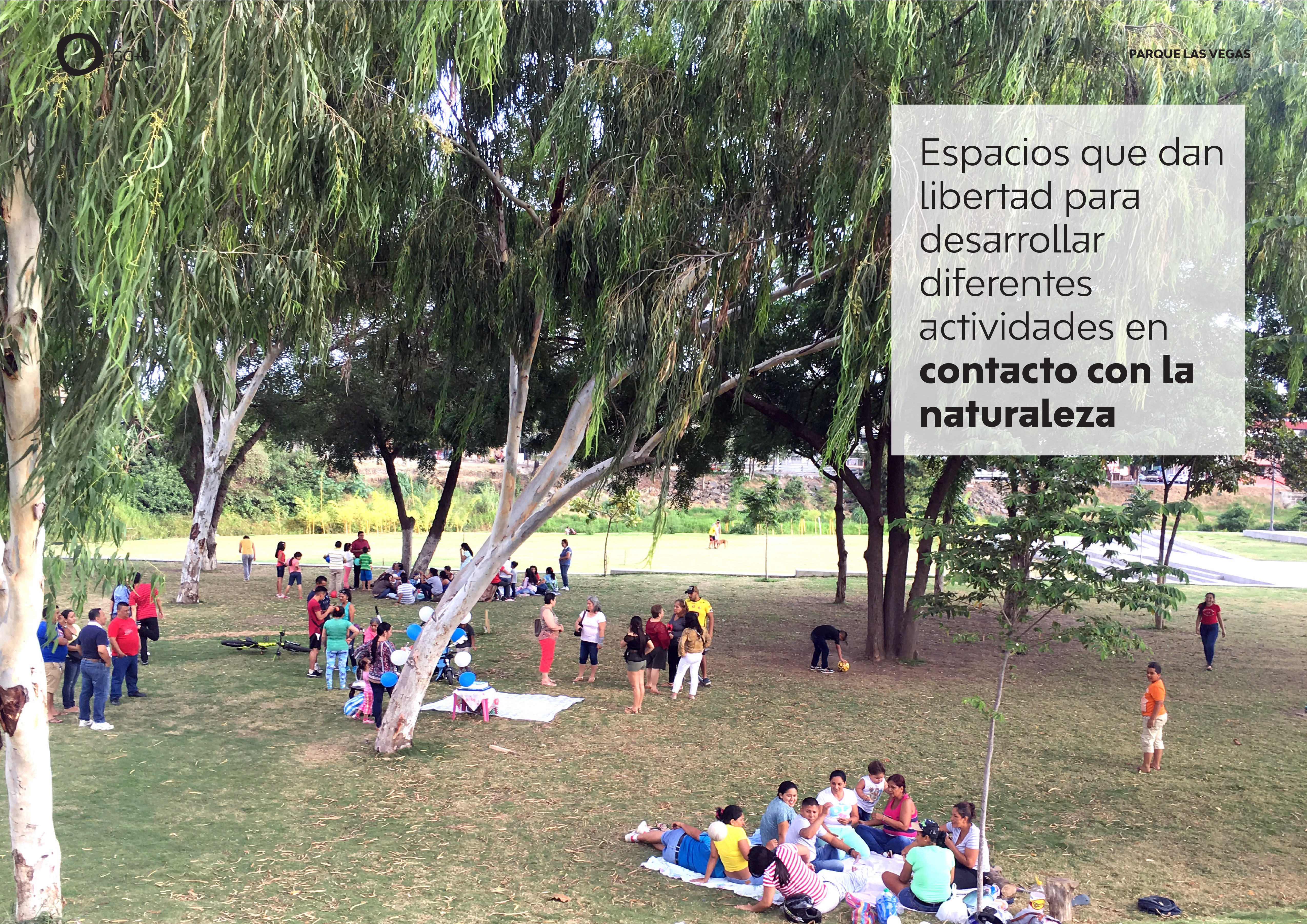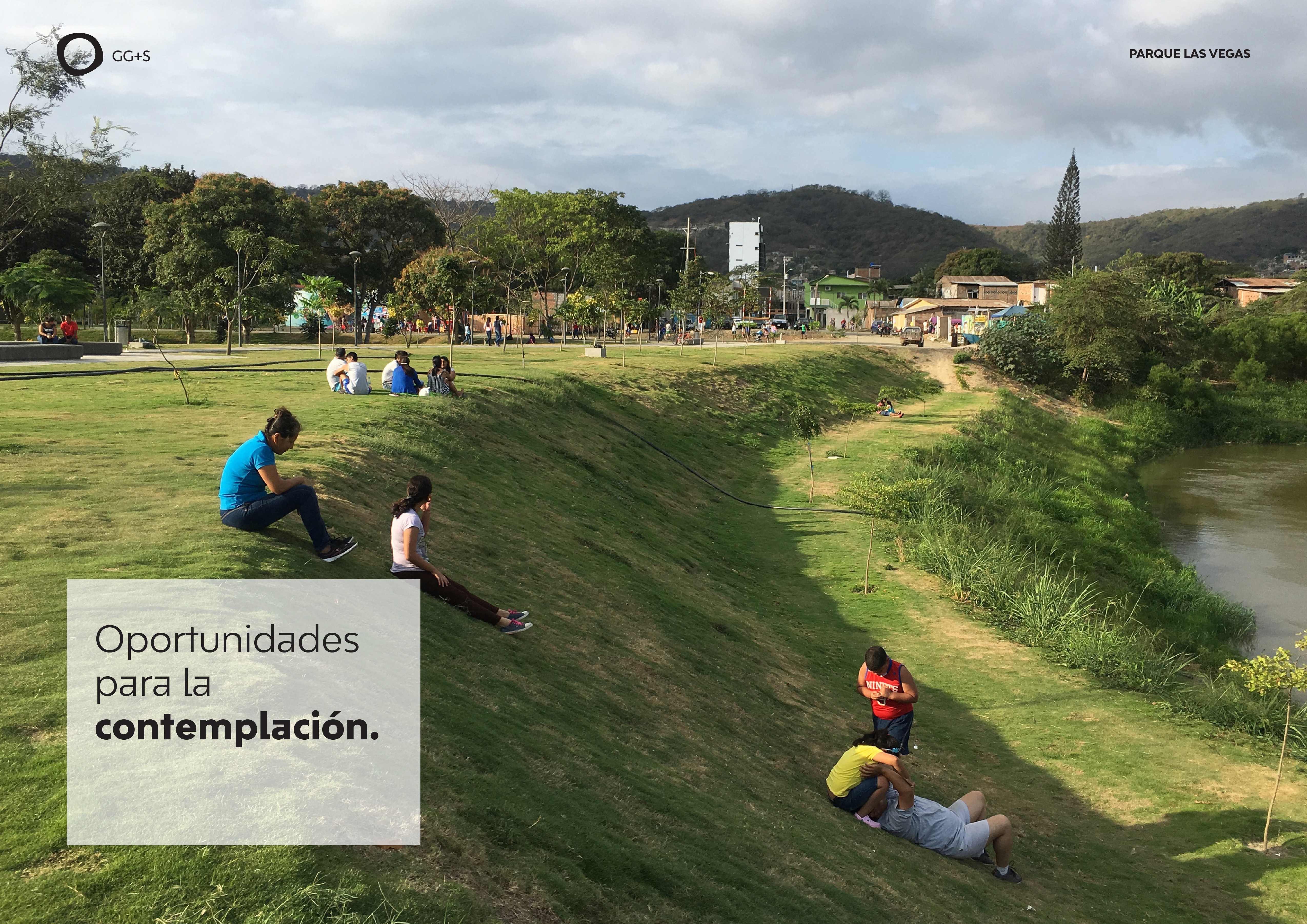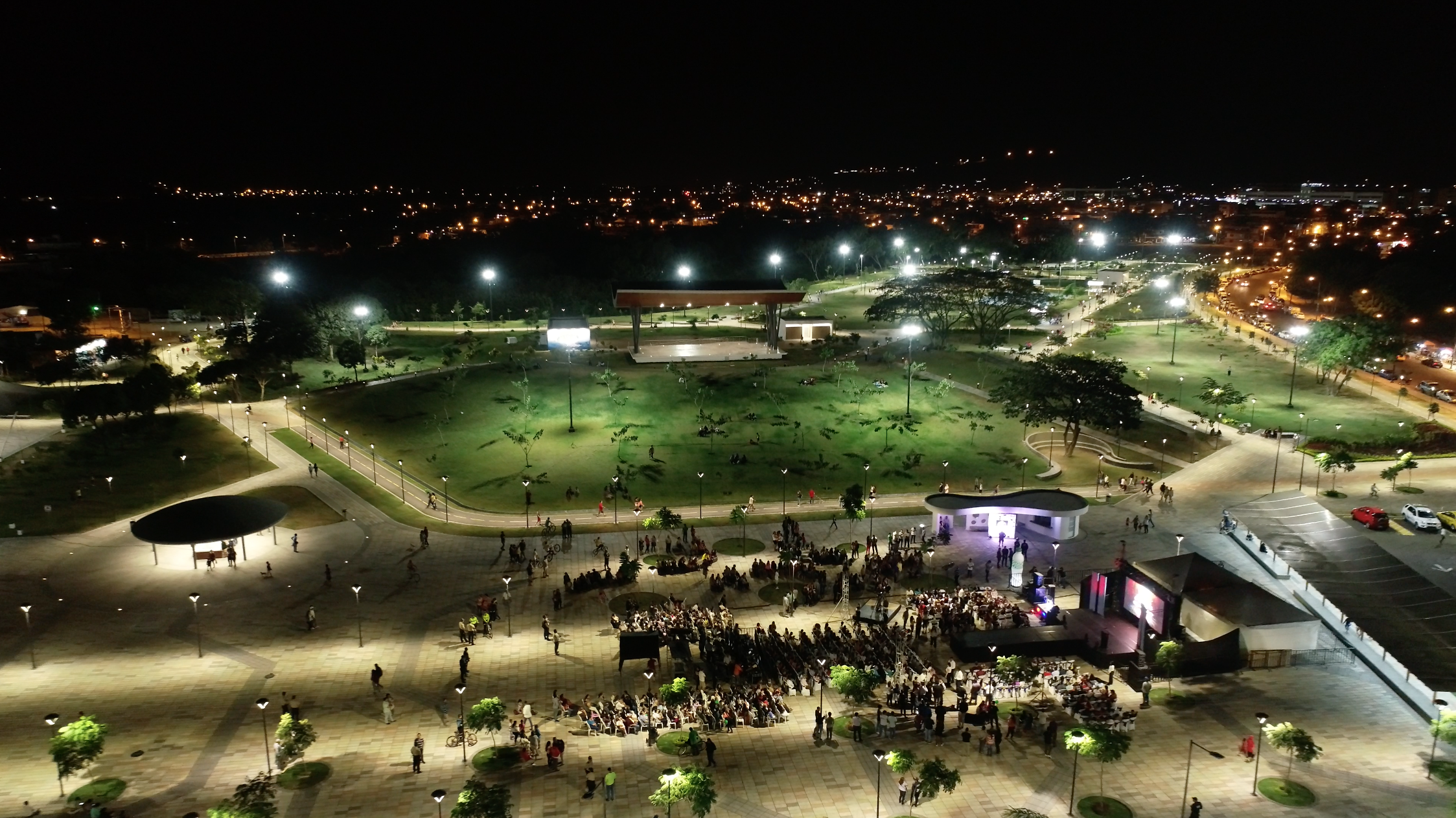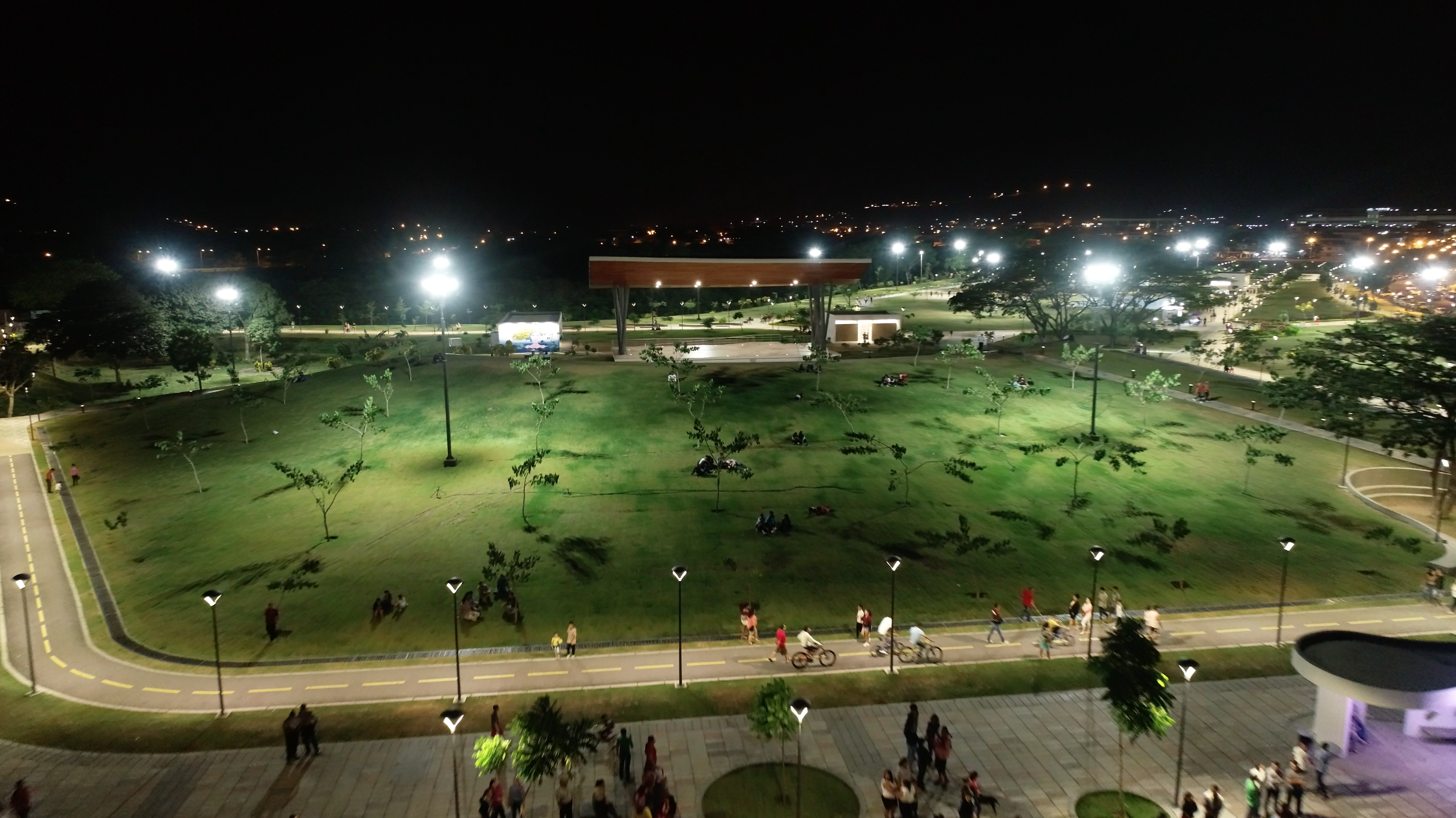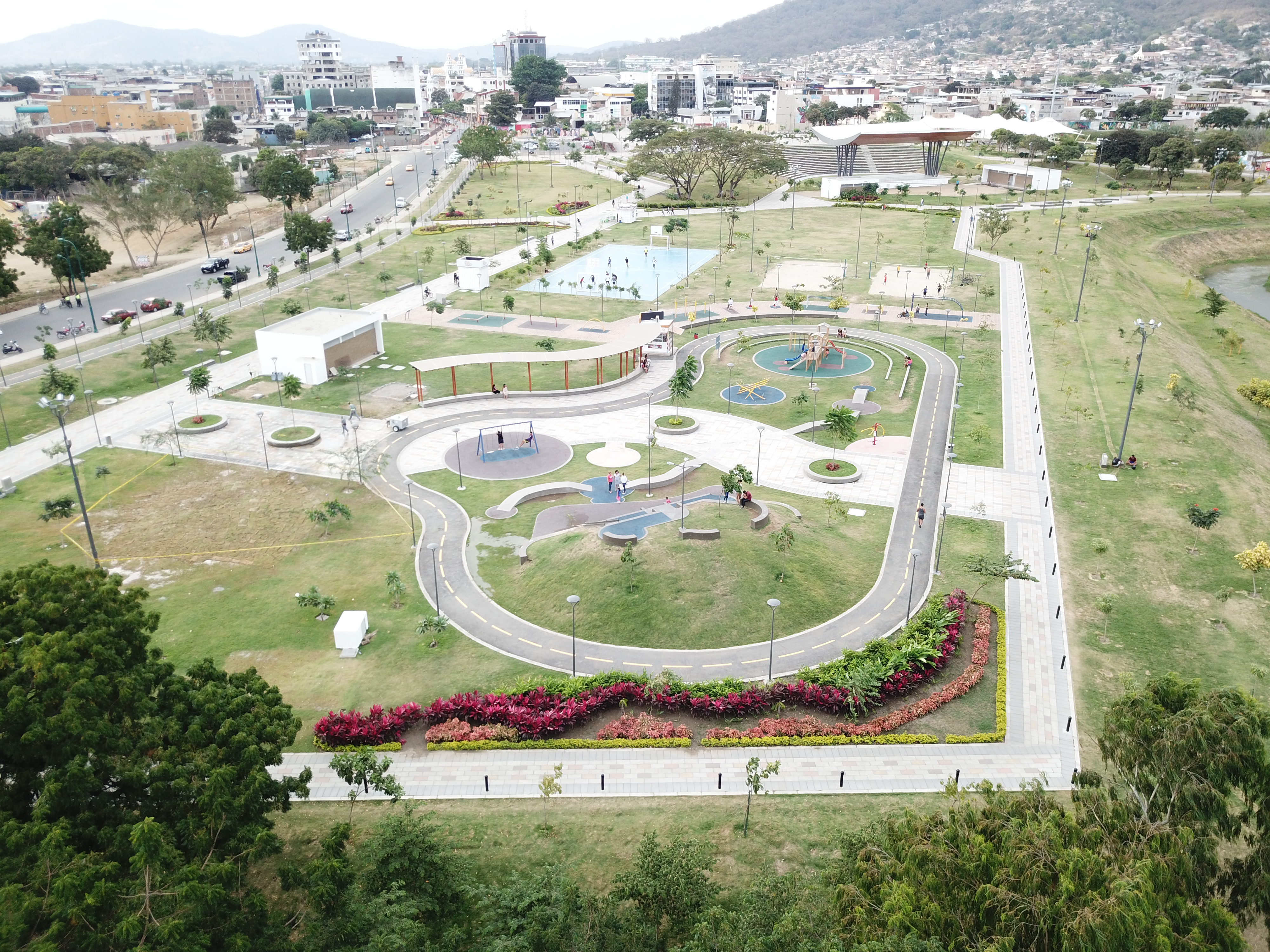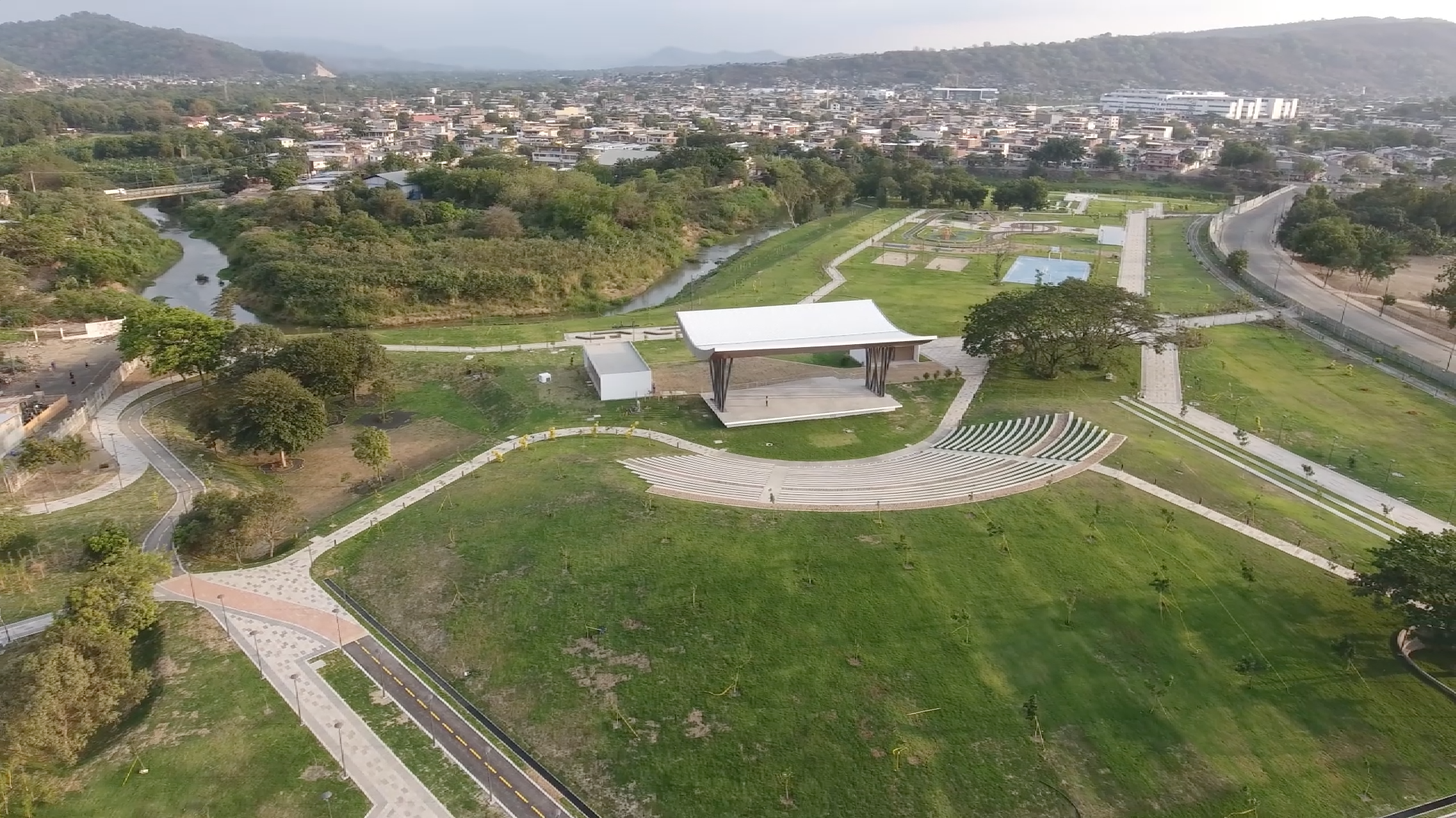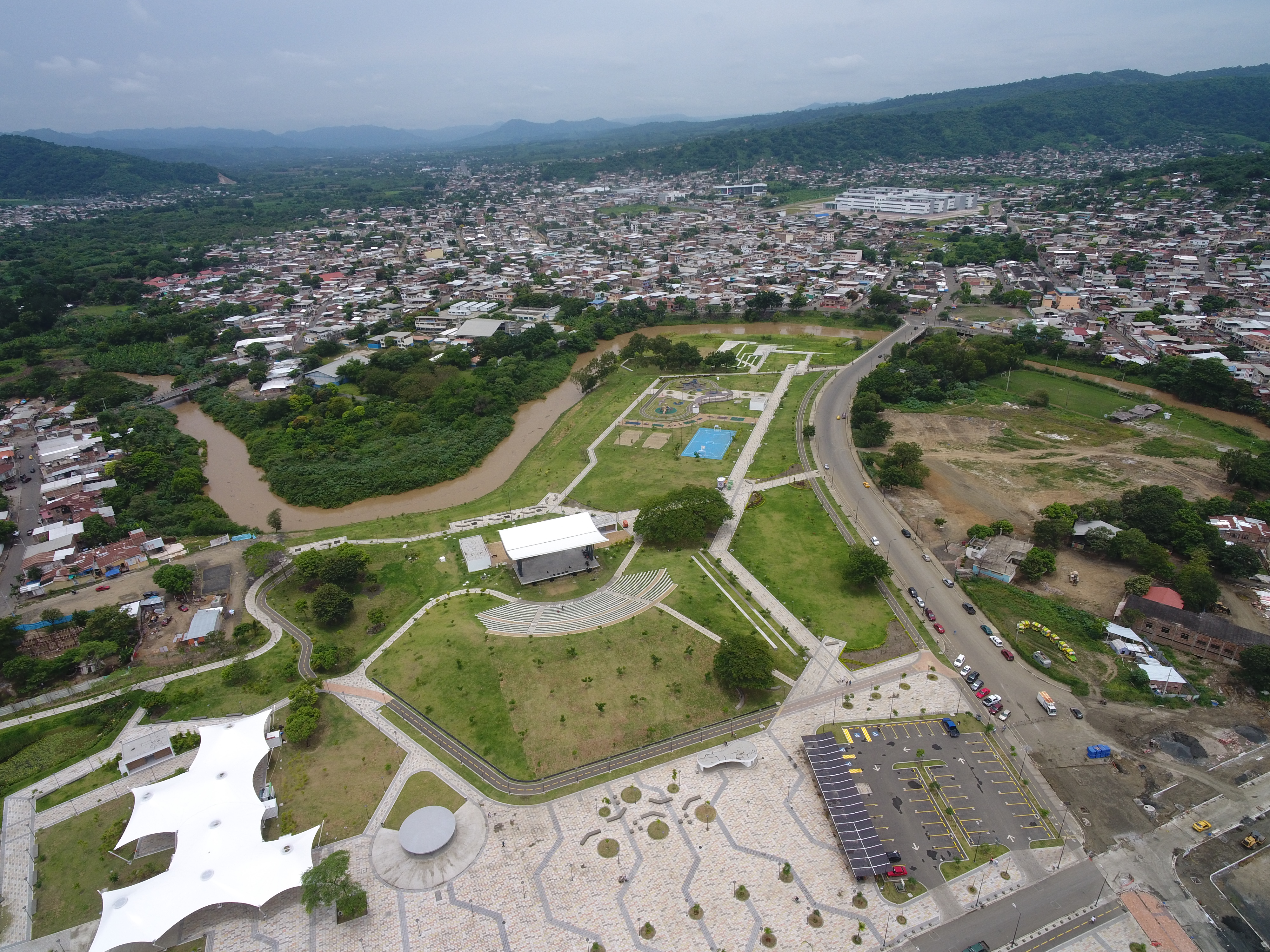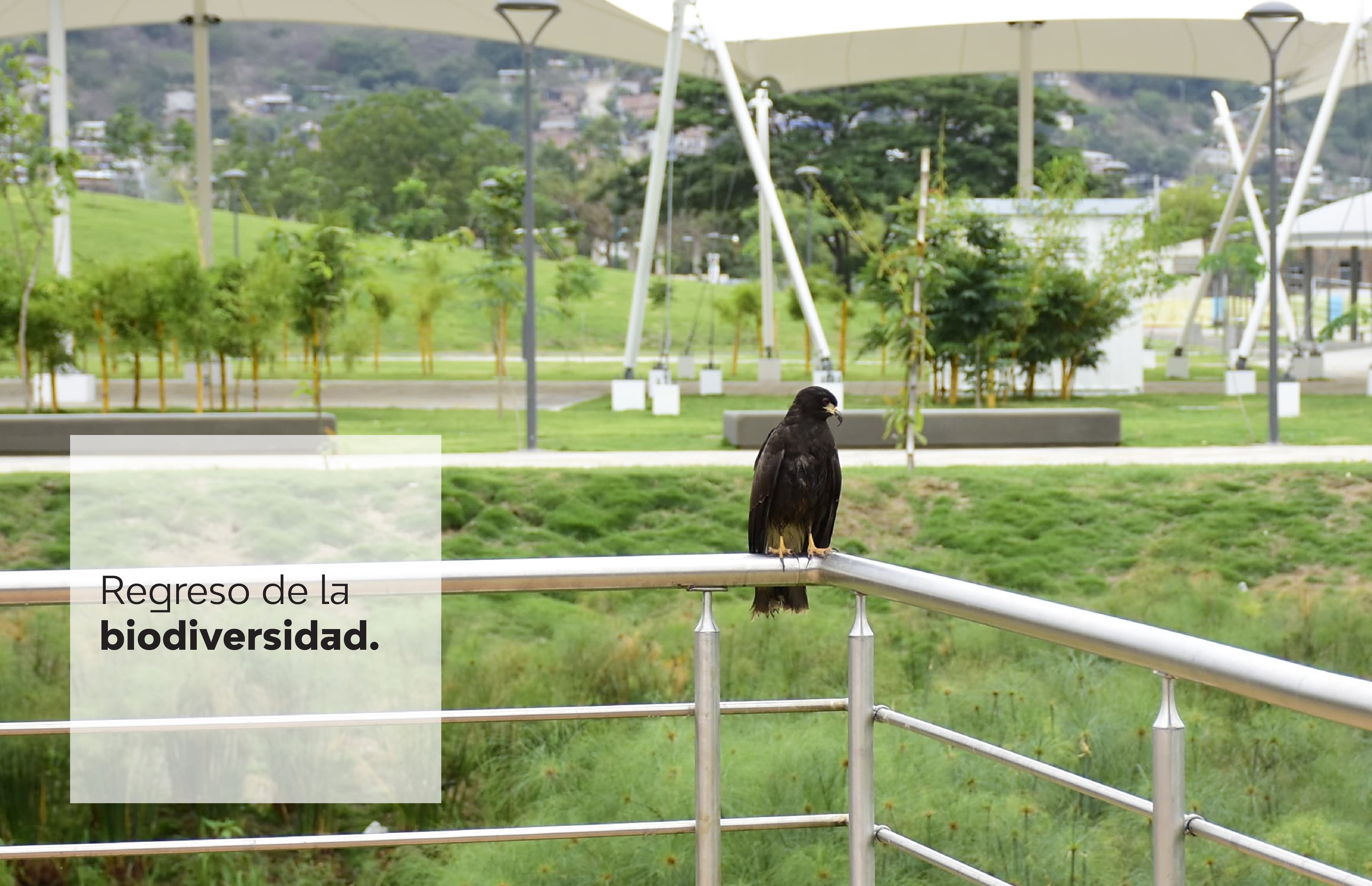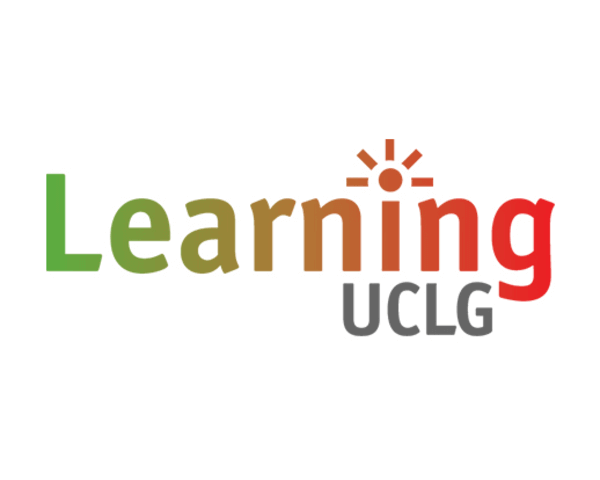City
Portoviejo
Main actors
City Government, other
Project area
Neighborhood or district
Duration
2015 - 2018
Taking reconstruction as an opportunity for implementing nature-based solutions for recovery.
Las Vegas Park in the city of Portoviejo, Ecuador can be considered as an example of the Build Back Better* concept on an urban scale. After the 2016 earthquake struck, the city allocated a part of the funds received from the central government for reconstruction and economic revitalisation to create this large park in the city centre. The park is part of an interconnected system of green and public spaces which the city aims to build along the Portoviejo River to reduce the flood risk. Hence, the city was able to take the challenge of reconstruction and economic revitalisation as an opportunity to generate new public spaces, revitalise the city centre, and confront the increasing flood risks that were threatening this part of the city.
The park’s design incorporates ecosystem-based adaptation (EbA) solutions such as the recovery and repurposing of the river banks as floodable recreational areas and the regeneration of an abandoned meander as a wetland. The regenerated wetland functions as a stormwater retention tank, while providing a valuable ecosystem that has attracted a wide variety of fauna. The park’s proximity to the city centre, together with events organised in its grounds, have been crucial for the area’s revitalisation and provide a large recreational and leisure space for the whole city.
*For more information about the Build Back Better principles, see the UCLG Policy Brief, Local Governments’ Commitment to Resilience, page 5.
This case study was contributed from the UCLG Learning Team.
Peer Learning Note #26: Climate Resilience and Urban Development
External links / documents
On Map
The Map will be displayed after accepting cookie policy
